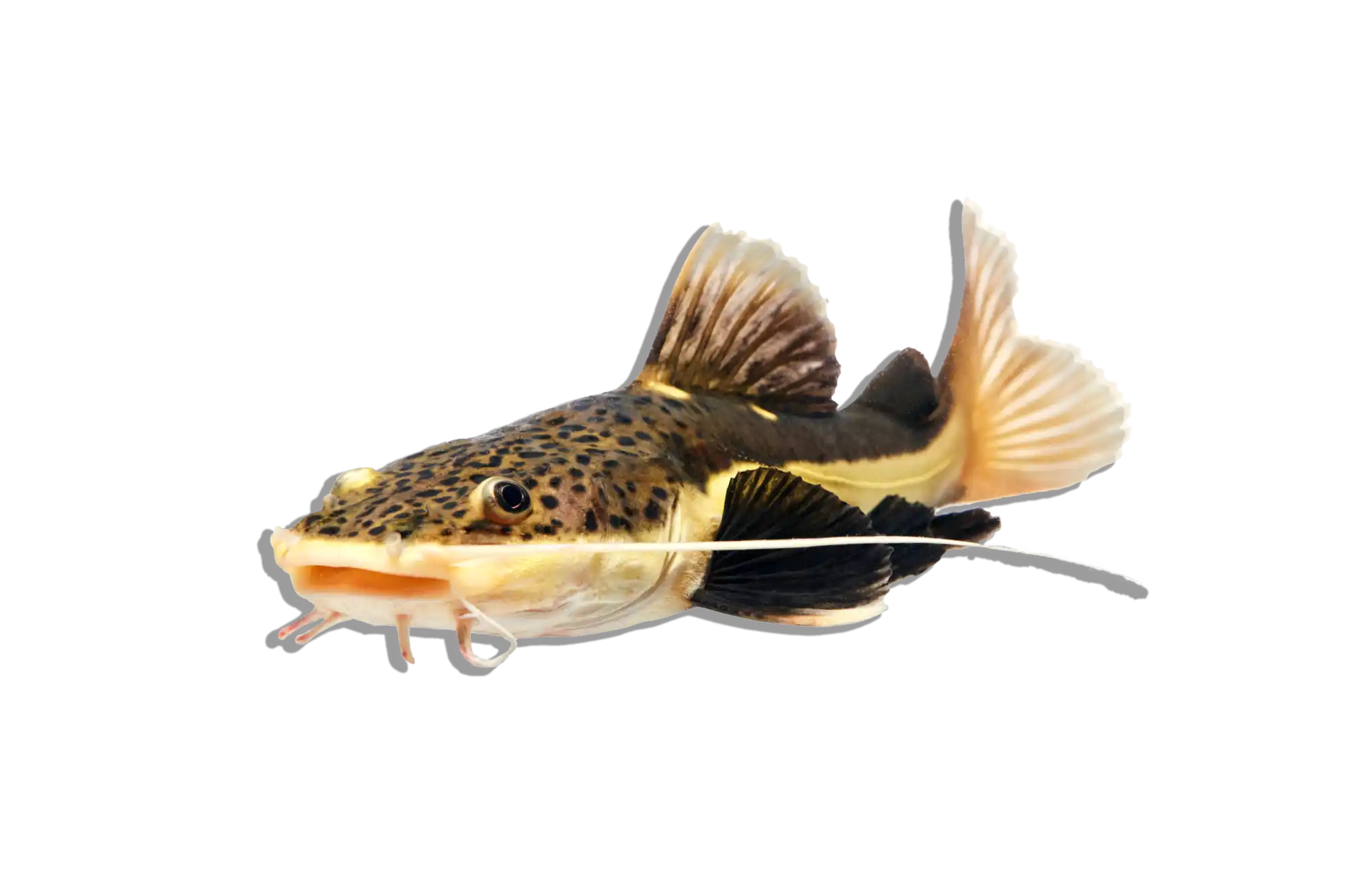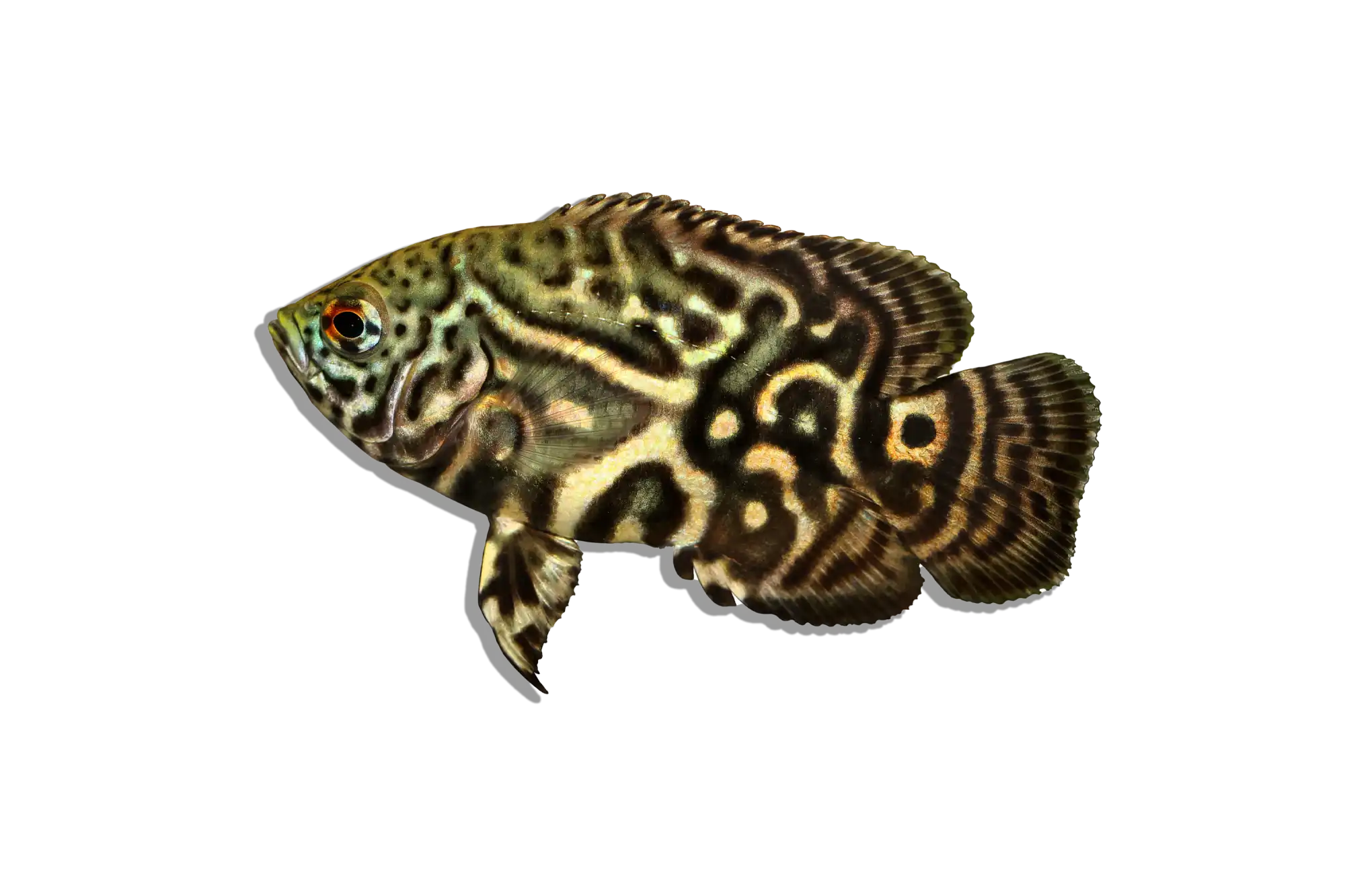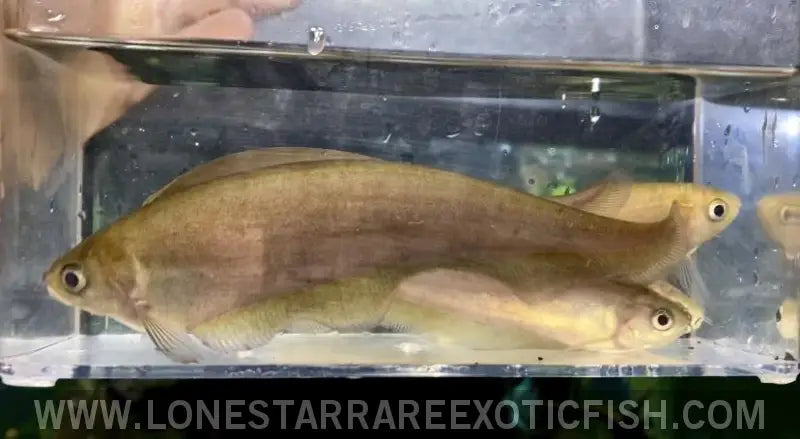Description
Common Name: African Brown Knifefish
Scientific Name: Xenomystus nigri
Other Names: Brown Knifefish, African Knifefish
The African Brown Knifefish is a fascinating and unique freshwater fish known for its elongated, laterally compressed body and knife-like shape. It has a smooth, sleek appearance with a brown to dark brown coloration that helps it blend into its natural environment. Unlike other knifefish species, the African Brown Knifefish lacks a dorsal fin and moves with an undulating motion of its long anal fin, giving it an elegant and ghostly glide through the water.
Habitat and Distribution: The African Brown Knifefish is native to various river systems in West and Central Africa, including the Niger, Congo, and Nile River basins. These fish inhabit slow-moving rivers, streams, and swamps with dense vegetation and soft, muddy or sandy substrates. The water in their natural habitat is typically warm, slightly acidic to neutral, and often stained with tannins from decaying plant matter, creating a dimly lit environment.
Size and Lifespan: In the wild and captivity, African Brown Knifefish can grow up to 12 inches (30 cm) in length, although they often remain slightly smaller in home aquariums. Their lifespan can range from 8 to 10 years, depending on the care and conditions provided in the aquarium. Ensuring a proper diet, clean water, and a suitable environment is crucial for their longevity and well-being.
Diet and Behavior: African Brown Knifefish are carnivorous and primarily feed on small invertebrates, insects, and fish in the wild. In an aquarium, they should be fed a diet of live or frozen foods such as bloodworms, brine shrimp, and small fish, as well as high-quality carnivorous pellets. These fish are nocturnal and more active during the night, often hiding during the day. They are generally peaceful but can be territorial, especially towards other knifefish or similar species.
Breeding and Reproduction: Breeding African Brown Knifefish in captivity is rare and challenging due to their specific environmental needs and behaviors. Little is documented about their breeding habits in the wild, and successful reproduction typically involves creating conditions that closely mimic their natural habitat. A separate breeding tank with optimal water conditions, plenty of hiding spots, and subdued lighting is necessary. There is no widely known method for inducing spawning, and they are not commonly bred in home aquariums.
Aquarium Care and Tank Requirements: To keep African Brown Knifefish, a tank of at least 75 gallons is recommended to provide ample swimming space and accommodate their size. The tank should include plenty of hiding spots created with rocks, driftwood, and dense plants to mimic their natural habitat and reduce stress. A soft, sandy substrate is ideal to protect their delicate skin. Gentle water flow and efficient filtration are essential to maintain water quality. Regular water changes are crucial to keep the environment clean and stable. Subdued lighting will help mimic their natural habitat and encourage natural behavior.
Ideal Tank Mates: African Brown Knifefish can be kept with other peaceful, similarly sized fish that share similar water parameter requirements. Suitable tank mates include other large, peaceful fish such as larger tetras, peaceful cichlids, and non-aggressive catfish. It is important to avoid housing them with very small fish, which may be seen as prey, or with overly aggressive fish that may bully or stress them.
Difficulty Level: Intermediate to Advanced. While they are hardy and adaptable, their nocturnal behavior, specific dietary needs, and territorial tendencies require attentive care and a well-maintained aquarium.
Water Parameters:
- Temperature: 75-82°F (24-28°C)
- pH: 6.0-7.5
- General Hardness (GH): 4-12 dGH
- Carbonate Hardness (KH): 2-8 dKH
- Ammonia: 0 ppm (ideal), up to 0.25 ppm (max)
- Nitrite: 0 ppm (ideal), up to 0.25 ppm (max)
- Nitrate: <20 ppm (ideal), up to 40 ppm (max)
Additional Information:
- The African Brown Knifefish's unique body shape and smooth, undulating swimming motion make it a captivating addition to any aquarium, providing both visual interest and a sense of mystery.
- These fish are known for their ability to navigate and hunt in low-light conditions, using their lateral line system to detect movements and vibrations in the water.
- In their natural habitats, African Brown Knifefish play a role in controlling populations of small invertebrates and fish, contributing to the ecological balance.
- Fun fact: The African Brown Knifefish can produce weak electrical pulses, which they use for navigation and communication in the dark, murky waters of their native habitat.



















